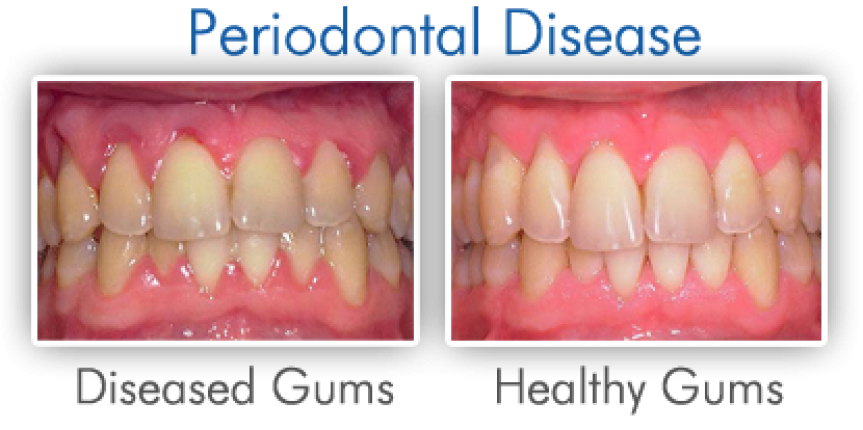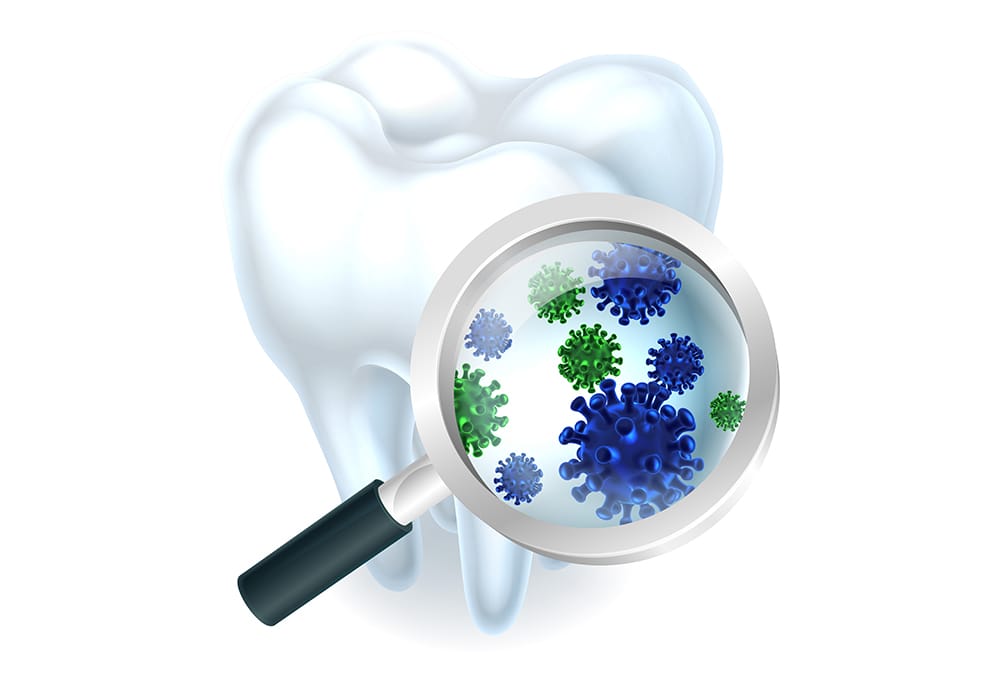Gum Disease Symptoms and Treatment
Gum disease is a chronic bacterial infection of the gums and bone supporting the teeth. It is a major cause of tooth loss. Nonetheless, as gum disease is usually painless, you may not even know you have it. Healthy teeth begin with healthy gums, so if you’re suffering from bleeding or swollen gums or teeth that seem to have moved, it may be time to take a closer look at your gums
Gum disease is caused by plaque bacteria which form a sticky film on the tooth surface. Plaque bacteria release toxins that can damage the gums. As the amount of plaque increases the saliva in your mouth can begin to mineralise the plaque to form tartar. These hard deposits on the teeth promote more plaque built up and further damage to the gums.
There are two main types of periodontal disease- gingivitis and periodontitis.
Gingivitis is very common and affect up to 65% of the general population. Periodontitis affects more than 30% of adults over age of 30. Both these infections can be treated or maintained, but the earlier they are diagnosed, the better the prognosis.
You can prevent gum disease by brushing twice daily, flossing once a day and visiting your dentist regularly.

Periodontitis Symptoms
Warning Signs
- Red, swollen or tender gums - Bleeding while brushing or flossing
- Gums that pull away from the teeth - Loose or separating teeth
- Pus between the gum and the tooth - Persistent bad breath
- A change in the way your teeth fit together when you bite
- A change in the fit of partial dentures
Occasionally gum disease can progress without any symptoms or pain. During a routine dental examination, your dentist checks for signs of gum disease, so undetected disease can be treated before it can advance.


Periodontal Disease Risk Factors
- Gingivitis - Poor oral health habits
- Smoking or chewing tobacco
- Older age - Obesity - Genetics
- Hormonal changes, such as those related to pregnancy or menopause
- Substance abuse
- Inadequate nutrition, including vitamin C deficiency
- Certain medications that cause dry mouth or gum changes
- Conditions that cause decreased immunity, such as leukemia, HIV/AIDS and cancer treatment
- Certain diseases, such as diabetes, rheumatoid arthritis and Crohn's disease
Gum Disease Complications
A cumulative amount of research has proven that there is evidence linking chronic periodontal disease / gum disease to conditions such as coronary heart disease, diabetes and respiratory disease.
The largest complication of untreated gingivitis is periodontitis. Complications stemming from periodontist include:
- Tooth loss
- Increased risk for coronary artery disease
- Increased risk for diabetes
- Increased risk for respiratory diseases like asthma
- Increased risk for rheumatoid arthritis
Periodontal Disease Treatment
The first steps of a periodontal treatment are by scaling. In doing so, the dentist removes all sorts of bacterial and plaque deposits on the teeth and can assess the nature and depth of the gum pockets. After scaling, the periodontal or gum pockets are checked to see if the healing is progressing as expected and if there are further complications.
When the gums are free from bacteria, they will heal back to their normal pink and firm state with no evidence of gingivitis. However, it is up to you to keep them clean with proper home care and regular visits to the hygienist at least twice a year. Your hygienist will help determine your maintenance schedule based on health and lifestyle factors as well as dental work present in your mouth.
Why not get in touch with us today? When it comes to the very best Periodontal Treatment in Preston , Lancashire , we pride ourselves on experienced reliable dentists and trusted expertise at Lane Ends Dental Practice.
